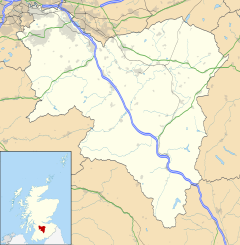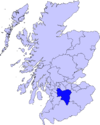
James Keir Hardie was a Scottish trade unionist and politician. He was a founder of the Labour Party, and served as its first parliamentary leader from 1906 to 1908.
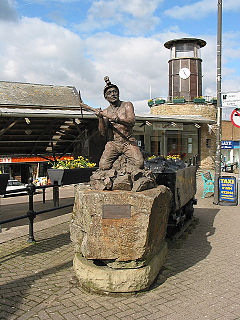
Cinderford is a town and civil parish on the eastern fringe of the Forest of Dean in Gloucestershire, England, which had a population of 8,494 at the 2011 census.

Cleland is a village near Motherwell and Wishaw in North Lanarkshire, Scotland. As of 2018, it has a population of about 3,000. The village has a strong coal mining heritage, and is a typical example of a working class village in North Lanarkshire and the Glasgow area. Due to its location, despite being at the heart of North Lanarkshire, the village is isolated, geographically and culturally, from surrounding towns such as Motherwell, Shotts and Wishaw.

Pontrhydyfen is a small village in the Afan Valley, in Neath Port Talbot county borough in Wales. The village sits at the confluence of the River Afan and the smaller Afon Pelenna, 1.8 miles (2.9 km) north of the larger village of Cwmafan and not far from the towns of Port Talbot and Neath. The views from the village are dominated by the hills of Foel Fynyddau (370 m) to the west, Moel y Fen (260 m) to the south-east and Mynydd Pen-rhys (280 m) to the north. This former coal mining community is distinguished by two large 19th-century bridges that span the valley: a railway viaduct and a former aqueduct, known in the Welsh language as Y Bont Fawr. The built-up area has a population of around 830. It is in the community of Pelenna.

James Baird was a Scottish industrialist. He was the founder of the Baird Trust.
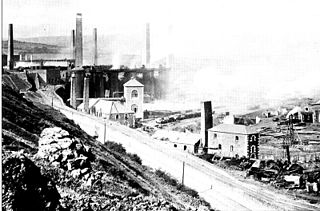
The Cyfarthfa Ironworks were major 18th- and 19th-century ironworks in Cyfarthfa, on the north-western edge of Merthyr Tydfil, in South West Wales.

Shotts is a town in North Lanarkshire, Scotland. It is located almost halfway between Glasgow and Edinburgh. The village has a population of about 8,840. A local story has Shotts being named after the legendary giant highwayman Bertram de Shotts, though toponymists give the Anglo-Saxon scēots as the real source of the name. Shotts is the home of the 2015 world champion pipe band, Shotts and Dykehead Caledonia Pipe Band.
Holytown is a village situated to the east of Bellshill and north of Motherwell in North Lanarkshire, Scotland. Most local amenities are shared with the adjacent villages of Carfin, Newarthill and New Stevenston which have a combined population of around 20,000 across the four localities.

The Tannehill Ironworks is the central feature of Tannehill Ironworks Historical State Park near the unincorporated town of McCalla in Tuscaloosa County, Alabama. Listed on the National Register of Historic Places as Tannehill Furnace, it was a major supplier of iron for Confederate ordnance. Remains of the old furnaces are located 12 miles (19 km) south of Bessemer off Interstate 59/Interstate 20 near the southern end of the Appalachian Mountains. The 2,063-acre (835 ha) park includes: the John Wesley Hall Grist Mill; the May Plantation Cotton Gin House; and the Iron & Steel Museum of Alabama.

Mossend is a small town in North Lanarkshire, Scotland, located on the A775 road to the immediate east of its 'sister town' Bellshill, west of the villages of Holytown and New Stevenston, north of the larger town of Motherwell and south of the Eurocentral industrial park and the M8 motorway. Along with Holytown, it forms a council ward which had a population of 13,480 in 2019, Mossend's estimated population being around half of that total.

The ruins of the Wilsontown Ironworks are located near the village of Forth in Lanarkshire in Scotland, approximately 23 miles (37 km) to the south east of Glasgow. The works were founded by the three Wilson brothers in 1779, and operated until 1842. The works had two blast furnaces, and in 1790 a forge was added. Later a rolling and slitting mill and additional forging hammers were installed. This increased the capacity of the works to 40 long tons (41 t) of manufactured iron per week. In its heyday the works employed 2,000 people. The village later had a railway branch line from Wilsontown to Auchengray railway station on the Caledonian Railway. This remained open for some years after the demise of the iron works and served several collieries in the area.

Newmains is a village and former mining community on the eastern edge of Wishaw, North Lanarkshire, Scotland, 18 miles (29 km) south-east of Glasgow. Although it is considered by the local authority to have a town centre in its own right.
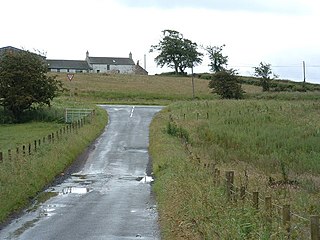
Chapelhall is a village outside the town of Airdrie in North Lanarkshire, Scotland. With house building, the distinction between Airdrie and Chapelhall is being eroded. Established as a small mining village in the 19th century, it now has population of around 6,560. Chapelhall is situated just off the M8 motorway 13 miles (21 km) east of Glasgow city centre and around 33 miles (53 km) west of Edinburgh. Chapelhall is also near to many of Lanarkshire's main towns, such as Bellshill, Coatbridge, Motherwell, Hamilton and Cumbernauld, as well as being around 3 miles (4.8 km) away from Airdrie town centre. The Eurocentral freight village/industrial estate is just a mile or so away and employs people from around Lanarkshire, Glasgow and West Lothian. The rail-freight village links with Grangemouth docks 28 miles (45 km) away,.

Blaenavon Ironworks is a former industrial site which is now a museum in Blaenavon, Wales. The ironworks was of crucial importance in the development of the ability to use cheap, low quality, high sulphur iron ores worldwide. It was the site of the experiments by Sidney Gilchrist Thomas and his cousin Percy Gilchrist that led to "the basic steel process" or "Gilchrist–Thomas process".
Robert Chisholm Robertson was a Scottish political activist.

Bolckow, Vaughan & Co., Ltd was an English ironmaking and mining company founded in 1864, based on the partnership since 1840 of its two founders, Henry Bolckow and John Vaughan. The firm drove the dramatic growth of Middlesbrough and the production of coal and iron in the north-east of England in the 19th century. The two founding partners had an exceptionally close working relationship which lasted until Vaughan's death.
Witton Park Colliery was a coal mine in Witton Park, Witton-le-Wear near Bishop Auckland, County Durham, Northern England.

The Shelby Iron Company was an iron manufacturing company that operated an ironworks in Shelby, Alabama. The iron company produced iron for the Confederate States of America and was destroyed towards the end of the American Civil War. The company continued to produce iron until the early part of the 20th century.
William Small was a Scottish trade unionist.
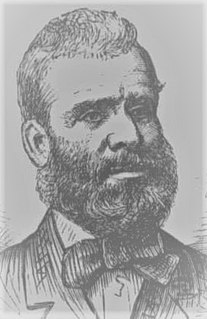
Enoch Hughes was an English-born iron-master and pioneer of the iron industry in both Australia and New Zealand.

